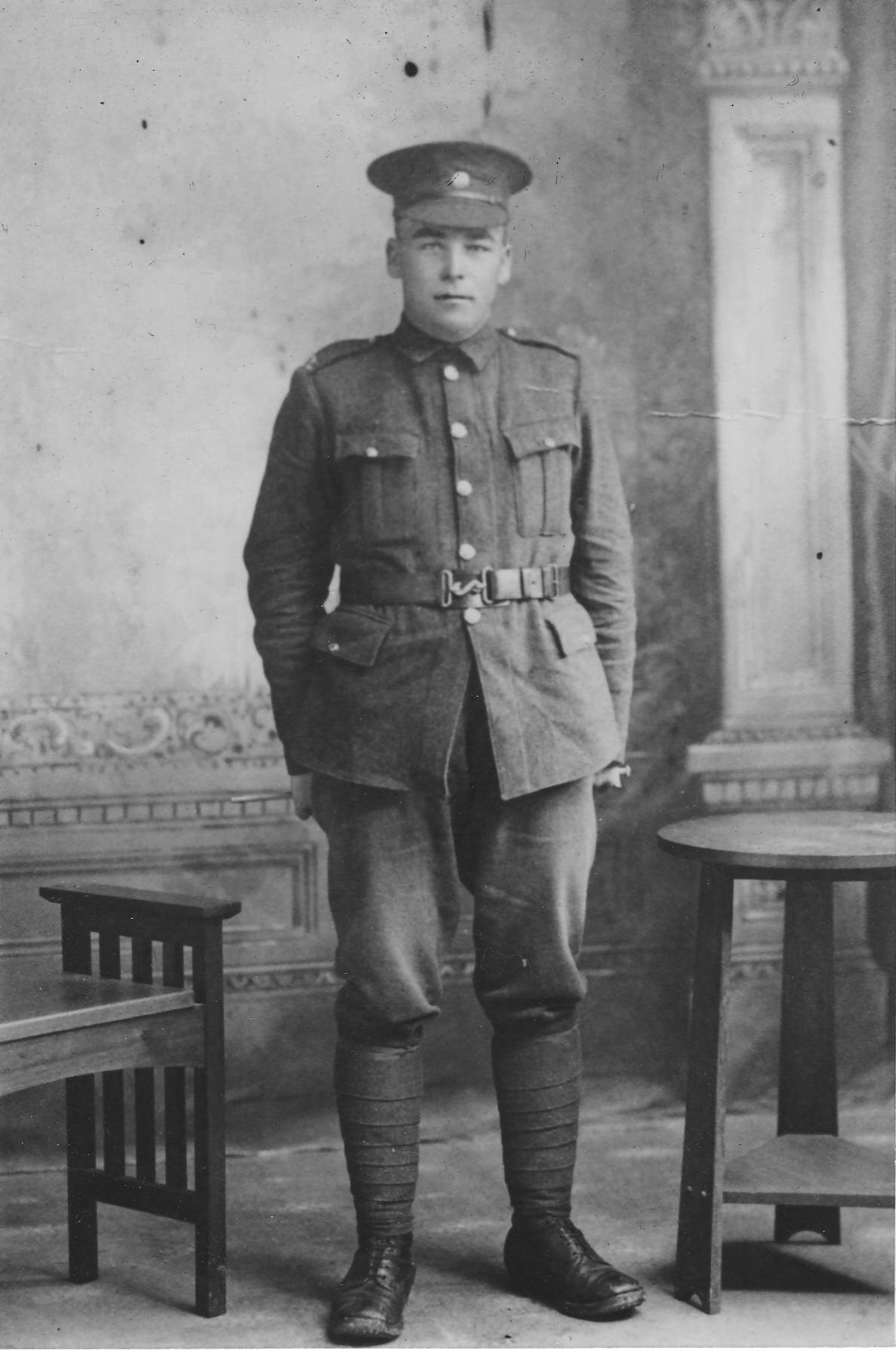Pte
Oscar Steers
Information about birth
|
Date of birth: 01/03/1893 |
|
Place of birth: Taumarere, Bay of Islands, Northland, New Zealand |
General information
|
Profession: Chainman Railway |
Army information
|
Country: New Zealand |
|
Force: New Zealand Expeditionary Force |
|
Rank: Private |
|
Service number: 24073 |
|
Enlistment date: 09/02/1916 |
|
Enlistment place: Trentham, Wellington, New Zealand |
|
Units: — Auckland Infantry Regiment, 2nd Bn. (Last known unit) |
Information about death
|
Date of death: 04/10/1917 |
|
Place of death: Calgary Grange, 's Graventafel, Belgium |
|
Cause of death: Killed in action (K.I.A.) |
|
Age: 24 |
Cemetery
|
Tyne Cot Cemetery Plot: XIV Row: A Grave: 8 |
Distinctions and medals 2
|
British War Medal Medal |
|
Victory Medal Medal |
Points of interest 3
| #1 | Place of birth | ||
| #2 | Enlistment place | ||
| #3 | Place of death (approximate) |
My story
Oscar Steers was a 24-year old Chainman from Taumarere, Northland, New Zealand. He was the youngest of 8 children of Rasmus Andreasen Stæhr, a Danish emigrant and Augusta Christina Christiandatter Eide, a Norwegian emigrant. The first 6 children were registered as Steer, the last 2 including Oscar were registered as Steers. Oscar enlisted in February 1916 and joined the 2nd Battalion Auckland Regiment, 2nd New Zealand Brigade, New Zealand Division. In October of the same year he embarked from Wellington, NZ to France.
On the 4th of October 1917, Oscar took part in the Battle of Broodseinde. The New Zealand Division advanced astride the ‘s Gravenstafel-Mosselmarkt road with two brigades. The 1st New Zealand Brigade on the left, attacked with the 1st Auckland and the 1st Wellington. When the first objective had been obtained and consolidated, the 2nd Auckland and the 2nd Wellington were to move through the leading battalions and were to head to the second objective at the foot of the Bellevue Spur.
As soon as the attack started, the 1st Auckland drifted to the north, dragging the left companies of the Wellingtons with them. The 1st Auckland took Winchester Farm, Winzig and Albatross farm. All these strongpoints were in the 48th Division’s area of operation. As the first wave had strafed to the north, certain German positions had been left unharmed. So when the 2nd Auckland and 2nd Wellington Battalions advanced, the 2nd Auckland met opposition from Korek on the ‘s Gravenstafel Ridge. After fierce fighting at Korek the 2nd Auckland and 2nd Wellington took up the advance. They worked together, taking a German battalion headquarters in a group of pillboxes known as Waterloo. The 2nd Auckland went on to Calgary Grange and established a line just east of this position.
After the war the body of Oscar Steers was found near Calgary Grange (D.9.a.80.20) and he was reburied at Tyne Cot Cemetery, where he is still remembered today.
On the 4th of October 1917, Oscar took part in the Battle of Broodseinde. The New Zealand Division advanced astride the ‘s Gravenstafel-Mosselmarkt road with two brigades. The 1st New Zealand Brigade on the left, attacked with the 1st Auckland and the 1st Wellington. When the first objective had been obtained and consolidated, the 2nd Auckland and the 2nd Wellington were to move through the leading battalions and were to head to the second objective at the foot of the Bellevue Spur.
As soon as the attack started, the 1st Auckland drifted to the north, dragging the left companies of the Wellingtons with them. The 1st Auckland took Winchester Farm, Winzig and Albatross farm. All these strongpoints were in the 48th Division’s area of operation. As the first wave had strafed to the north, certain German positions had been left unharmed. So when the 2nd Auckland and 2nd Wellington Battalions advanced, the 2nd Auckland met opposition from Korek on the ‘s Gravenstafel Ridge. After fierce fighting at Korek the 2nd Auckland and 2nd Wellington took up the advance. They worked together, taking a German battalion headquarters in a group of pillboxes known as Waterloo. The 2nd Auckland went on to Calgary Grange and established a line just east of this position.
After the war the body of Oscar Steers was found near Calgary Grange (D.9.a.80.20) and he was reburied at Tyne Cot Cemetery, where he is still remembered today.
Sources 8
|
Ancestry http://www.ancestry.com Sources used |
|
Auckland Cenotaph https://www.aucklandmuseum.com/war-memorial/online-cenotaph/record/C14943?n=steers&w=World%20War%20I%2C%201914-1918&ordinal=4&from=%2Fwar-memorial%2Fonline-cenotaph%2Fsearch Sources used |
|
CWGC https://www.cwgc.org/find-war-dead/casualty/464757/steers,-oscar/ Sources used |
|
First, second and third battalions the Auckland Regiment New Zealand Expeditionary Force at the Battle of Broodseinde (Third Ypres) : 4 october 1917, John H. Gray, 2009, p. 1-3, 16-19. Sources used |
|
Passchendaele: The Day-by-Day Account, McCarthy C., London, Arms & Armour Press, 1995, p. 112-114. Sources used |
|
The Auckland regiment N.Z.E.F. 1914-1919. Being an account of the doings on active service of the first, second and third battalions of the Auckland Regiment, Burton O.E., Auckland, Whitcombe & Tombs, 1922, p. 165-181. Sources used |
|
The long long trail https://www.longlongtrail.co.uk/army/ Sources used |
|
The New Zealand Division 1916 - 1919, Stewart H., Whitecombe & Tombs, p. 248 - 275. Sources used |
